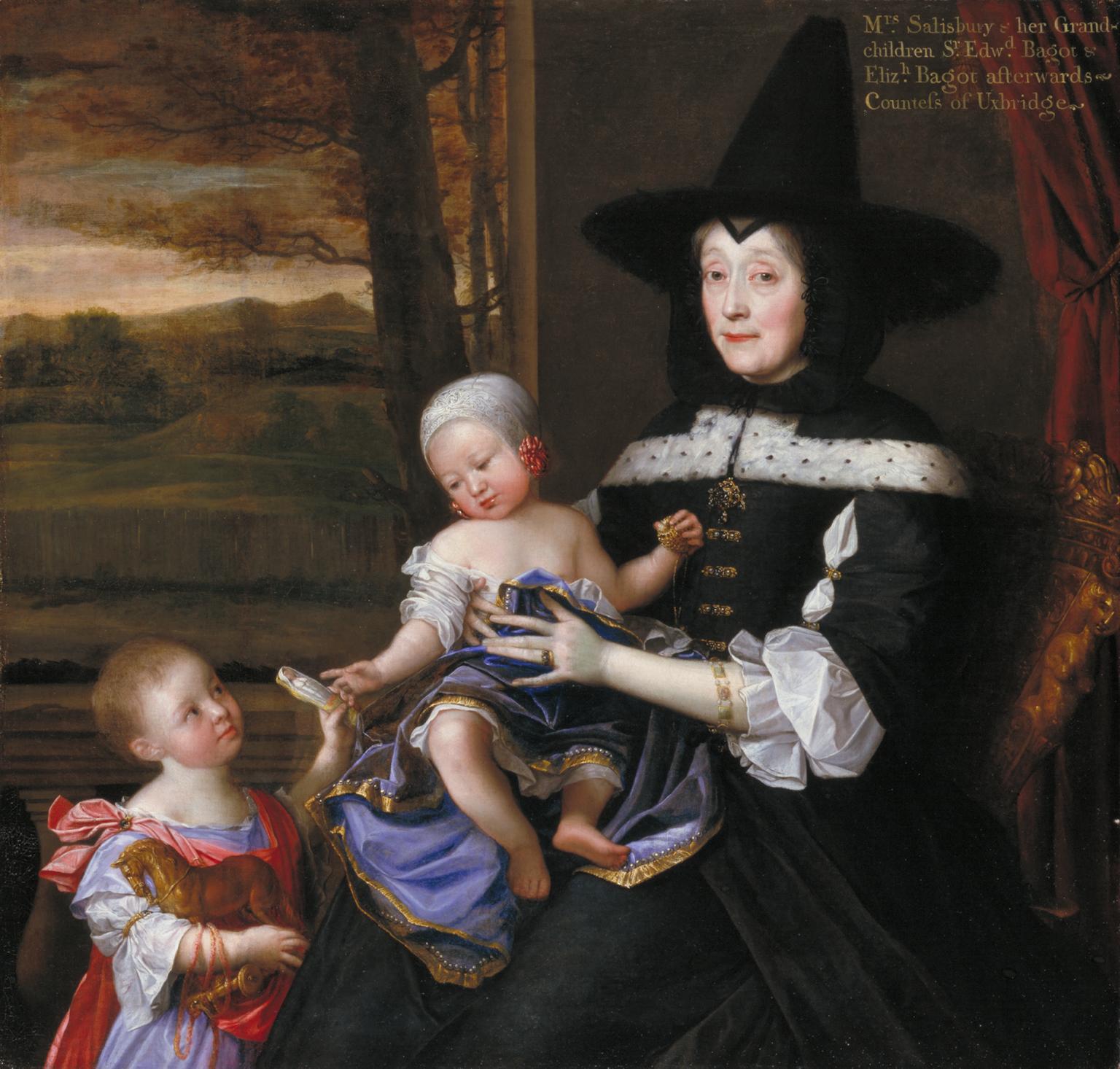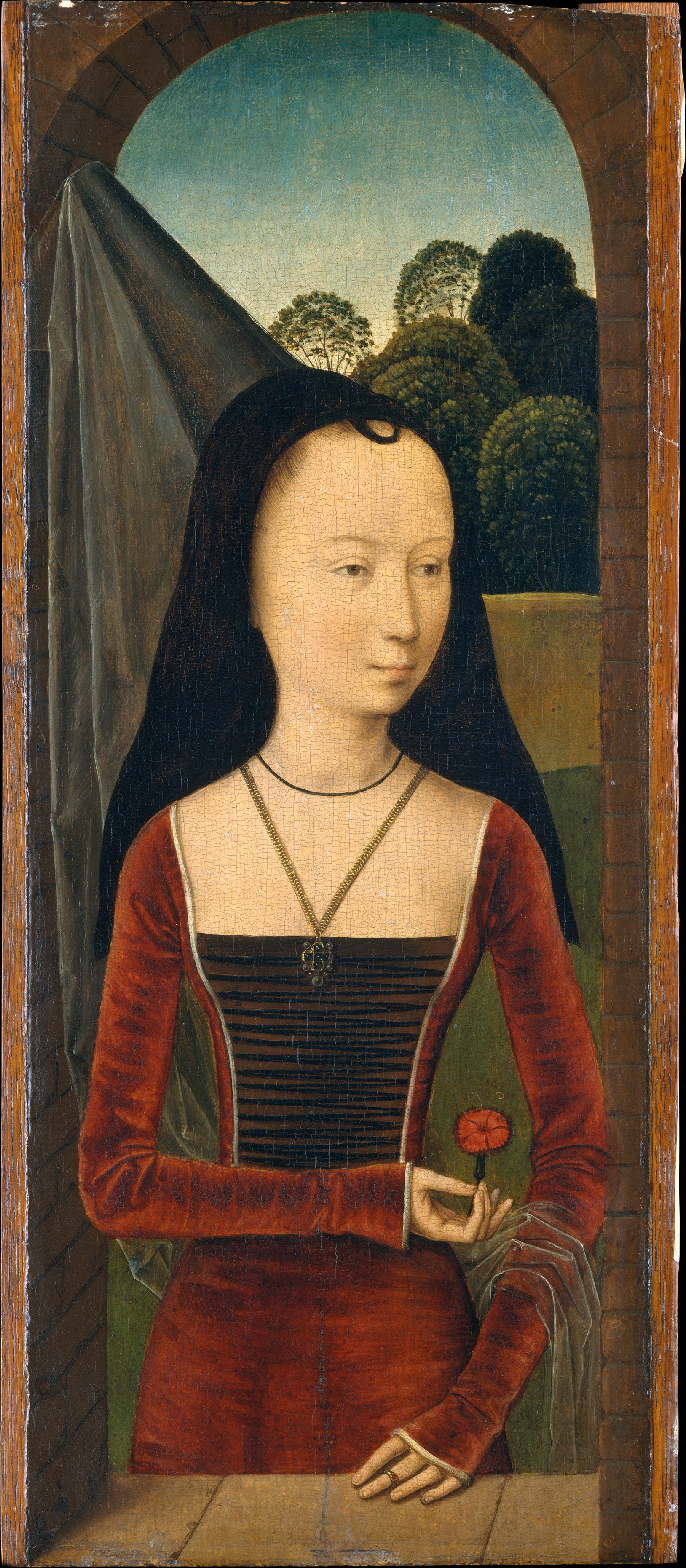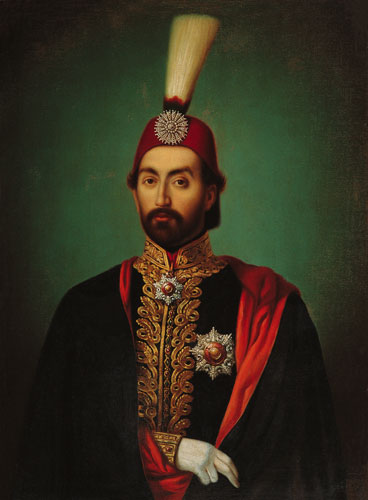|
Tantour
The tantour (''tantoor'') is a form of cone-shaped women's headdress similar to the hennin, popular in the Levant during the nineteenth century, but seldom seen after 1850 outside of use as a folk costume. The tradition persisted longer in Lebanon among the Druze. The tantour was held in place by ribbons tied around the head. A silk scarf was wound around the base with a white veil attached to the peak. The height and composition of the tantour were proportional to the wealth of its owner, with the most splendid tantours made of gold and reaching as high as thirty inches. Some were encrusted with gems and pearls. The tantour was a customary gift presented to the bride by her husband on their wedding day. Gallery File:Damascusfashion.jpg, Damascus fashion, illustration from the book ''Popular Costumes in Turkey,'' 1873 File:Zahlefashion.jpg, Lebanese fashion, illustration from the book ''Popular Costumes in Turkey,'' 1873 See also *Hennin *Kokoshnik *Ochipok *Labbade, tradi ... [...More Info...] [...Related Items...] OR: [Wikipedia] [Google] [Baidu] |
Pointed Hat
Pointed hats have been a distinctive item of headgear of a wide range of cultures throughout history. Although often suggesting an ancient Indo-European tradition, they were also traditionally worn by women of Lapland, the Japanese, the Mi'kmaq people of Atlantic Canada, and the Huastecs of Veracruz and Aztec (e.g., as illustrated in the Codex Mendoza). The Kabiri of New Guinea have the ''diba'', a pointed hat glued together. History The conical hat is known to have existed as early as the Bronze Age in the Middle East, Eurasia, and Central Europe. Conical hats were recorded in ancient Egypt, especially when depicting Osiris and pharaohs, who emulated Osiris' iconography. Conical hats were also recorded by many Indo-European civilizations. Golden hats have been recorded in burial sites in Central Europe. The Scythians of the Eurasian steppes were noted for having pointed hats, often mentioned by other civilizations, such as in the DNa inscription on the tomb of Darius the Grea ... [...More Info...] [...Related Items...] OR: [Wikipedia] [Google] [Baidu] |
Hennin
The hennin (french: hennin ; possibly from Flemish nl, henninck meaning cock or rooster) was a headdress in the shape of a cone, steeple, or truncated cone worn in the Late Middle Ages by European women of the nobility. They were most common in Burgundy and France, but also elsewhere, especially at the English courts, and in Northern Europe, Hungary and Poland. They were little seen in Italy. It is unclear what styles the word ''hennin'' described at the time, though it is recorded as being used in French areas in 1428, probably before the conical style appeared. The word does not appear in English until the 19th century. The term is therefore used by some writers on costume for other female head-dresses of the period. With many characters or stories in pop culture, the Hennin is the element used to identify princesses of any kind, as well as that of courtesans or any important woman of royalty. Conical hennins These appear from about 1430 onwards, especially after the mid-c ... [...More Info...] [...Related Items...] OR: [Wikipedia] [Google] [Baidu] |
Hennin
The hennin (french: hennin ; possibly from Flemish nl, henninck meaning cock or rooster) was a headdress in the shape of a cone, steeple, or truncated cone worn in the Late Middle Ages by European women of the nobility. They were most common in Burgundy and France, but also elsewhere, especially at the English courts, and in Northern Europe, Hungary and Poland. They were little seen in Italy. It is unclear what styles the word ''hennin'' described at the time, though it is recorded as being used in French areas in 1428, probably before the conical style appeared. The word does not appear in English until the 19th century. The term is therefore used by some writers on costume for other female head-dresses of the period. With many characters or stories in pop culture, the Hennin is the element used to identify princesses of any kind, as well as that of courtesans or any important woman of royalty. Conical hennins These appear from about 1430 onwards, especially after the mid-c ... [...More Info...] [...Related Items...] OR: [Wikipedia] [Google] [Baidu] |
Druze Culture
The Druze (; ar, دَرْزِيٌّ, ' or ', , ') are an Arabic-speaking esoteric ethnoreligious group from Western Asia who adhere to the Druze faith, an Abrahamic, monotheistic, syncretic, and ethnic religion based on the teachings of Hamza ibn Ali ibn Ahmad and ancient Greek philosophers like Plato, Aristotle, Pythagoras, and Zeno of Citium. Adherents of the Druze religion call themselves " the Monotheists" or "the Unitarians" (''al-Muwaḥḥidūn''). The Epistles of Wisdom is the foundational and central text of the Druze faith. The Druze faith incorporates elements of Isma'ilism, Christianity, Gnosticism, Neoplatonism, Zoroastrianism, Buddhism, Hinduism, Pythagoreanism, and other philosophies and beliefs, creating a distinct and secretive theology based on an esoteric interpretation of scripture, which emphasizes the role of the mind and truthfulness. Druze believe in theophany and reincarnation. Druze believe that at the end of the cycle of rebirth, which is achieve ... [...More Info...] [...Related Items...] OR: [Wikipedia] [Google] [Baidu] |
Druze
The Druze (; ar, دَرْزِيٌّ, ' or ', , ') are an Arabic-speaking esoteric ethnoreligious group from Western Asia who adhere to the Druze faith, an Abrahamic, monotheistic, syncretic, and ethnic religion based on the teachings of Hamza ibn Ali ibn Ahmad and ancient Greek philosophers like Plato, Aristotle, Pythagoras, and Zeno of Citium. Adherents of the Druze religion call themselves " the Monotheists" or "the Unitarians" (''al-Muwaḥḥidūn''). The Epistles of Wisdom is the foundational and central text of the Druze faith. The Druze faith incorporates elements of Isma'ilism, Christianity, Gnosticism, Neoplatonism, Zoroastrianism, Buddhism, Hinduism, Pythagoreanism, and other philosophies and beliefs, creating a distinct and secretive theology based on an esoteric interpretation of scripture, which emphasizes the role of the mind and truthfulness. Druze believe in theophany and reincarnation. Druze believe that at the end of the cycle of rebirth, which is achie ... [...More Info...] [...Related Items...] OR: [Wikipedia] [Google] [Baidu] |
19th-century Fashion
The nineteenth century marks the period beginning January 1, 1801 and ends December 31, 1900. It was a period of dramatic change and rapid socio-cultural advancement, where society and culture are constantly changing with advancement of time. The ''Fashion of the 19th Century'' strongly reflected the technology, art, politics and culture of the time of which were highly influential to the styles and silhouettes. For women, fashion was an extravagant and extroverted display of the female silhouette with corset pinched waistlines, bustling full-skirts that flowed in and out of trend and decoratively embellished gowns. For men, three piece suits were tailored for usefulness in business as well as sporting activity. The fashion in this article includes styles from the 19th Century through a Western context - namely Europe and North America. Historical overview and fashions Early 1800s (1800-1829) Technological innovations At the turn of the 18th century, the Western world � ... [...More Info...] [...Related Items...] OR: [Wikipedia] [Google] [Baidu] |
Lebanese Fashion
Lebanese may refer to: * Something of, from, or related to the Lebanese Republic * Lebanese people, people from Lebanon or of Lebanese descent * Lebanese Arabic, the colloquial form of Arabic spoken in Lebanon * Lebanese culture * Lebanese cuisine See also * * List of Lebanese people This is a list of notable individuals born and residing mainly in Lebanon. Lebanese expatriates residing overseas and possessing Lebanese citizenship are also included. Activists *Lydia Canaan – activist, advocate, public speaker, and United ... {{disambig Language and nationality disambiguation pages ... [...More Info...] [...Related Items...] OR: [Wikipedia] [Google] [Baidu] |
Ottoman Clothing
Ottoman clothing or Ottoman fashion is the style and design of clothing worn during the Ottoman Empire. Ottoman period While the Palace and its court dressed lavishly, the common people were only concerned with covering themselves. Starting in the reign of Suleiman the Magnificent, administrators enacted sumptuary laws upon clothing. The clothing of Muslims, Christians, Jewish communities, clergy, tradesmen, and state and military officials were particularly strictly regulated during the reign of Suleiman the Magnificent. In this period men wore outer items such as 'mintan' (a vest or short jacket), 'zıbın', 'şalvar' (trousers), 'kuşak' (a sash), 'potur', an entari or kaftan (a long robe), 'kalpak', ' sarık' on the head; 'çarık', çizme (boots), 'çedik', 'Yemeni' on the feet. The administrators and the wealthy wore caftans with fur lining and embroidery, whereas the middle class wore 'cübbe' (a mid-length robe) and 'hırka' (a short robe or tunic), and the poor wore ... [...More Info...] [...Related Items...] OR: [Wikipedia] [Google] [Baidu] |
Middle Eastern Clothing
Middle or The Middle may refer to: * Centre (geometry), the point equally distant from the outer limits. Places * Middle (sheading), a subdivision of the Isle of Man * Middle Bay (other) * Middle Brook (other) * Middle Creek (other) * Middle Island (other) * Middle Lake (other) * Middle Mountain, California * Middle Peninsula, Chesapeake Bay, Virginia * Middle Range, a former name of the Xueshan Range on Taiwan Island * Middle River (other) * Middle Rocks, two rocks at the eastern opening of the Straits of Singapore * Middle Sound, a bay in North Carolina * Middle Township (other) * Middle East Music * "Middle" (song), 2015 * "The Middle" (Jimmy Eat World song), 2001 * "The Middle" (Zedd, Maren Morris and Grey song), 2018 *"Middle", a song by Rocket from the Crypt from their 1995 album ''Scream, Dracula, Scream!'' *"The Middle", a song by Demi Lovato from their debut album ''Don't Forget'' *"The Middle", a song by ... [...More Info...] [...Related Items...] OR: [Wikipedia] [Google] [Baidu] |
Arabic Clothing
Arabic (, ' ; , ' or ) is a Semitic language spoken primarily across the Arab world.Semitic languages: an international handbook / edited by Stefan Weninger; in collaboration with Geoffrey Khan, Michael P. Streck, Janet C. E.Watson; Walter de Gruyter GmbH & Co. KG, Berlin/Boston, 2011. Having emerged in the 1st century, it is named after the Arab people; the term "Arab" was initially used to describe those living in the Arabian Peninsula, as perceived by geographers from ancient Greece. Since the 7th century, Arabic has been characterized by diglossia, with an opposition between a standard prestige language—i.e., Literary Arabic: Modern Standard Arabic (MSA) or Classical Arabic—and diverse vernacular varieties, which serve as mother tongues. Colloquial dialects vary significantly from MSA, impeding mutual intelligibility. MSA is only acquired through formal education and is not spoken natively. It is the language of literature, official documents, and formal written med ... [...More Info...] [...Related Items...] OR: [Wikipedia] [Google] [Baidu] |
Hats
A hat is a head covering which is worn for various reasons, including protection against weather conditions, ceremonial reasons such as university graduation, religious reasons, safety, or as a fashion accessory. Hats which incorporate mechanical features, such as visors, spikes, flaps, orthodontic headgear, braces or party hat, beer holders shade into the broader category of headgear. In the past, hats were an indicator of social status. In the military, hats may denote nationality, branch of service, rank or regiment. Police typically wear distinctive hats such as peaked caps or brimmed hats, such as those worn by the Royal Canadian Mounted Police. Some hats have a protective function. As examples, the hard hat protects construction workers' heads from injury by falling objects, a British police Custodian helmet protects the officer's head, a sun hat shades the face and shoulders from the sun, a cowboy hat protects against sun and rain and an ushanka fur hat with fold-down ... [...More Info...] [...Related Items...] OR: [Wikipedia] [Google] [Baidu] |
Headgear
Headgear, headwear, or headdress is the name given to any element of clothing which is worn on one's head, including hats, helmets, turbans and many other types. Headgear is worn for many purposes, including protection against the elements, decoration, or for religious or cultural reasons, including social conventions. Purposes Protection or defence Headgear may be worn for protection against cold (such as the Canadian tuque), heat, rain and other precipitation, glare, sunburn, sunstroke, dust, contaminants, etc. Helmets are worn for protection in battle or against impact, for instance when riding bicycles or motor vehicles. There are also hats that are worn for protection from the cold. Fashion Headgear can be an article of fashion, usually hats, caps or hoods. The formal man's black silk top hat was formerly an indispensable portion of the suit, and women's hats have, over the years, attained a fantastic number of shapes ranging from immense confections to no more than a f ... [...More Info...] [...Related Items...] OR: [Wikipedia] [Google] [Baidu] |








